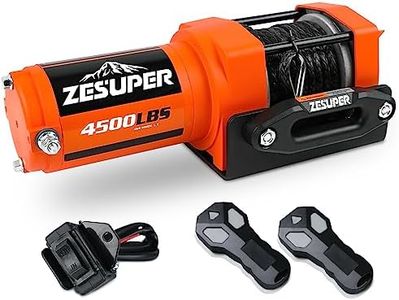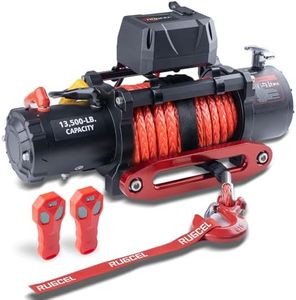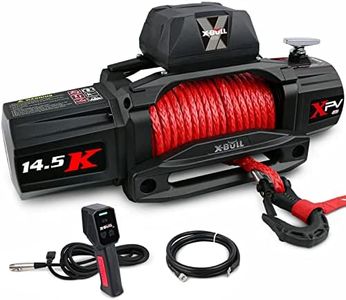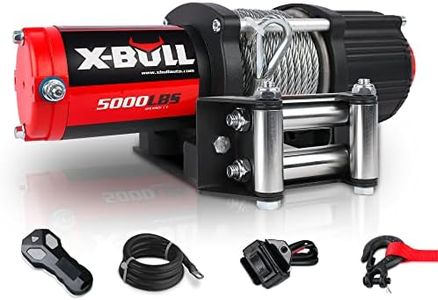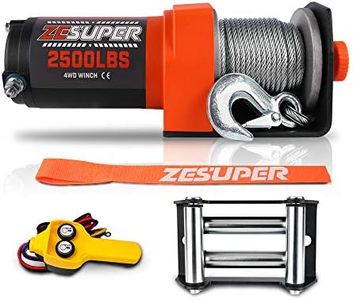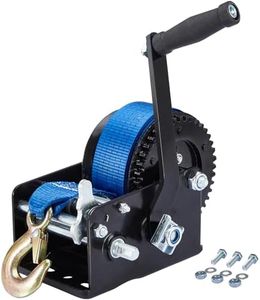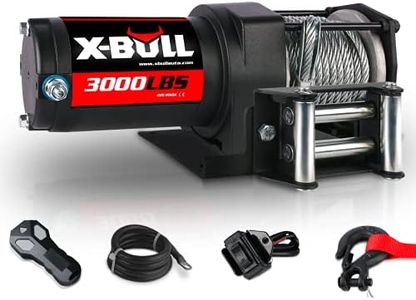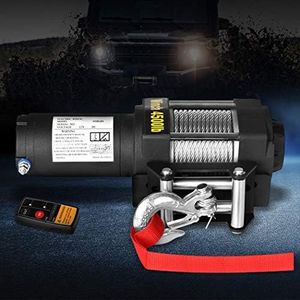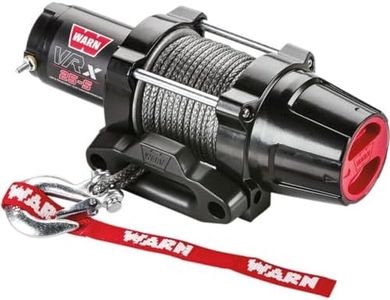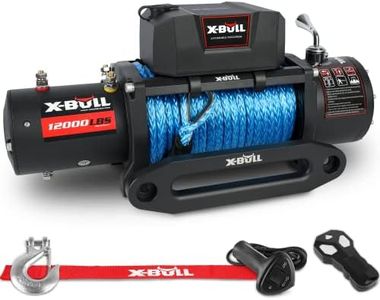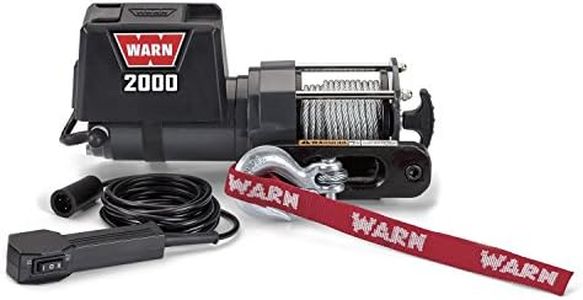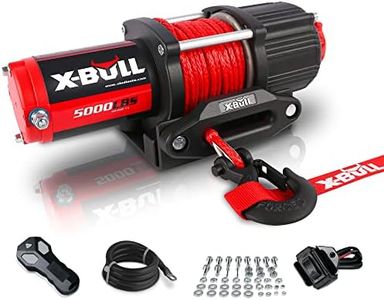We Use CookiesWe use cookies to enhance the security, performance,
functionality and for analytical and promotional activities. By continuing to browse this site you
are agreeing to our privacy policy
10 Best Truck Winches
From leading brands and best sellers available on the web.Buying Guide for the Best Truck Winches
When shopping for a truck winch, it's important to consider what you'll use the winch for, such as off-roading, recovery, or utility work. Think about the size of your truck, the typical conditions you'll face, and how frequently you plan to use the winch. Understanding your needs will help you focus on key features rather than getting distracted by extras that might not be necessary for your situation.Winch Capacity (Pulling Power)Winch capacity is a measurement of the maximum weight a winch can pull safely, usually given in pounds. This is perhaps the most important spec to think about, as a winch that's too small won't be able to move your truck if you get stuck. The general rule is to choose a winch with a capacity that's 1.5 to 2 times the weight of your fully loaded vehicle. For smaller trucks and light-duty use, lower capacities might work, while larger trucks or off-roading in tough terrain might require higher pulling power.
Line Type (Cable or Synthetic Rope)The winch line is what actually pulls your truck, and it can be either a steel cable or a synthetic rope. Steel cables are strong, durable, and resistant to abrasion, often used for long-term or heavy-duty use. They are heavier and can be harder to handle. Synthetic ropes are lighter, easier to work with, and safer if they break, but they can be vulnerable to abrasion and UV damage without proper care. Pick steel cable for heavy, tough jobs, and synthetic rope for ease of use, safety, and when weight is a concern.
Motor TypeTruck winches typically use either series-wound or permanent magnet motors. Series-wound motors are more powerful and handle higher workloads, making them better for frequent or heavy-duty use, but they can be more expensive. Permanent magnet motors are lighter and more energy-efficient when used intermittently, making them suitable for occasional recovery or lighter jobs. Think about how often and how hard you'll ask your winch to work to pick the right motor.
Line Speed and Gear RatioLine speed is how fast the winch can pull in the cable (usually measured with no load), while gear ratio affects both speed and pulling strength. Higher gear ratios provide more pulling power but are slower, while lower gear ratios are faster but may not handle heavy loads as well. If you want to recover your truck quickly and typically face lighter situations, a faster winch (lower gear ratio) may suit you. For heavy recoveries, prioritize pulling power with a higher gear ratio.
Control Types (Wired vs Wireless)Winches can be operated with wired remotes, wireless remotes, or both. Wired controls are reliable and don’t need batteries, but limit your movement around the truck. Wireless controls give you greater freedom and safety distance, though some can be subject to interference or battery issues. Choose based on your preference for convenience versus dependability, and consider situations where you may need to operate the winch from a distance.
Mounting and SizeThe winch must physically fit your truck and be compatible with your bumper or mounting system. Winches come in various dimensions and weights. A heavy-duty winch provides more capability but adds weight, which can affect vehicle performance. Make sure the winch fits the mount you have or plan to install, and that adding the winch won’t overload your front axle.
Water and Weather ResistanceWinches are exposed to the elements, so look for ratings or information about their resistance to water, dust, and corrosion. Some winches come with sealing or specific ratings to handle deep water or mud use. If you expect to drive through rivers or mud, or be in wet climates, a high level of water resistance will make your winch last longer and need less maintenance.
